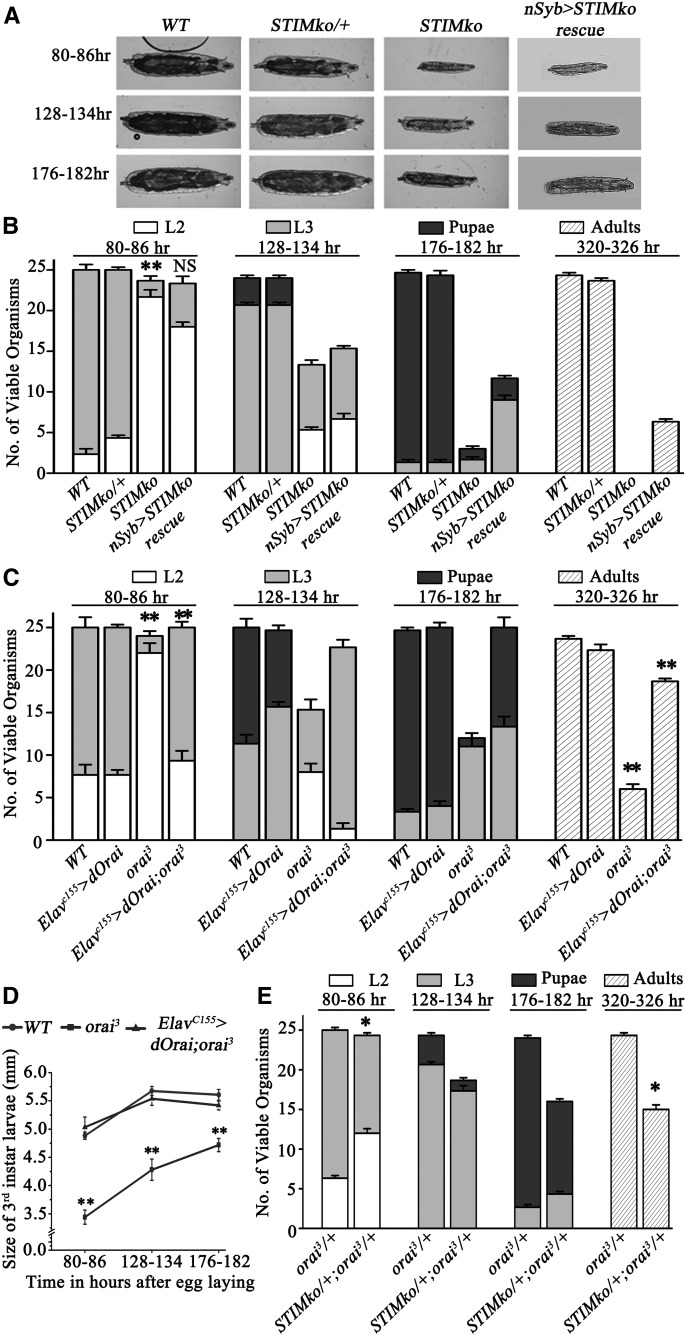Figure 2.
dSTIM knockout organisms are third instar larval lethal. (A) Larval images represent size and stage at indicated times in hours AEL. (B) The bar graph represents average number of viable organisms at the indicated time in hours AEL (± SEM). Each bar represents number of viable organisms (out of 25 organisms) and their stage of life cycle. L2 stands for second and L3 for third instar larval stage, respectively. STIM knockout (STIMko) organisms die as late second or early third instar larvae and exhibit slow growth, which was partially rescued by pan-neuronal overexpression of dSTIM (nSyb > STIMko rescue), **P < 0.001. (C) orai3 homozygotes lag behind in development and start dying as third instar larvae. Pan-neuronal over expression of dOrai (ElavC155 > dOrai;orai3) rescued both larval lethality and slow growth of orai3 homozygotes. (D) Line graph represents third instar larval size at particular time points. Larvae of orai3 homozygotes were smaller compared to controls. The reduced size of orai3 homozygotes was rescued by pan-neuronal dOrai expression (n = 3*10, Student’s t-test **P < 0.001). (E) Heteroallelic combination of STIMko and orai3 (STIMko/+;orai3/+) showed partial lethality, *P < 0.05. Numbers of second instar larvae at 80–86 hr and adults at 320–326 hr were compared by the Student’s t-test. The genotypes compared, with their P-values, are given in Table 3. AEL, after egg laying; NS, not significant; WT, wild-type.

